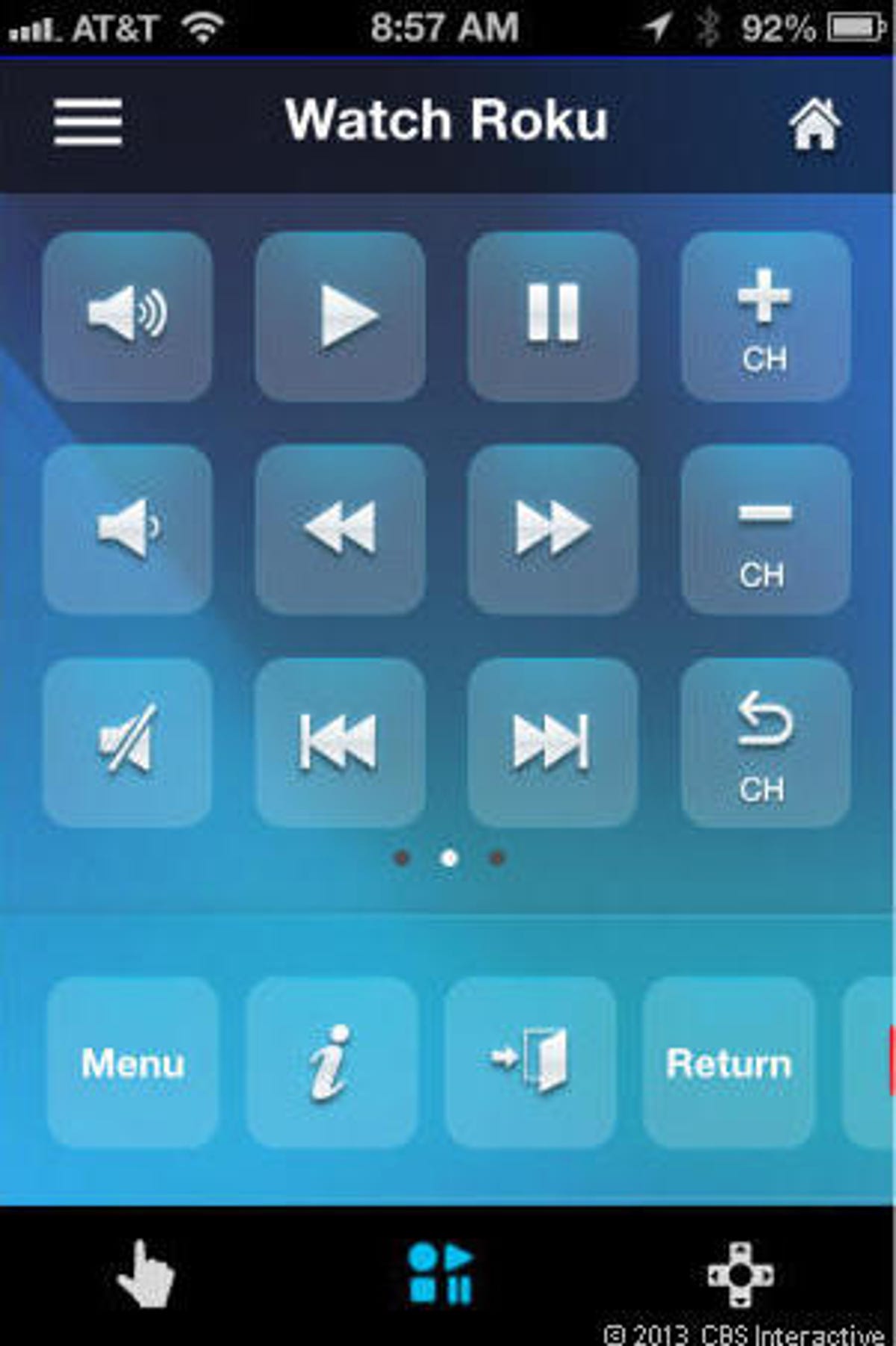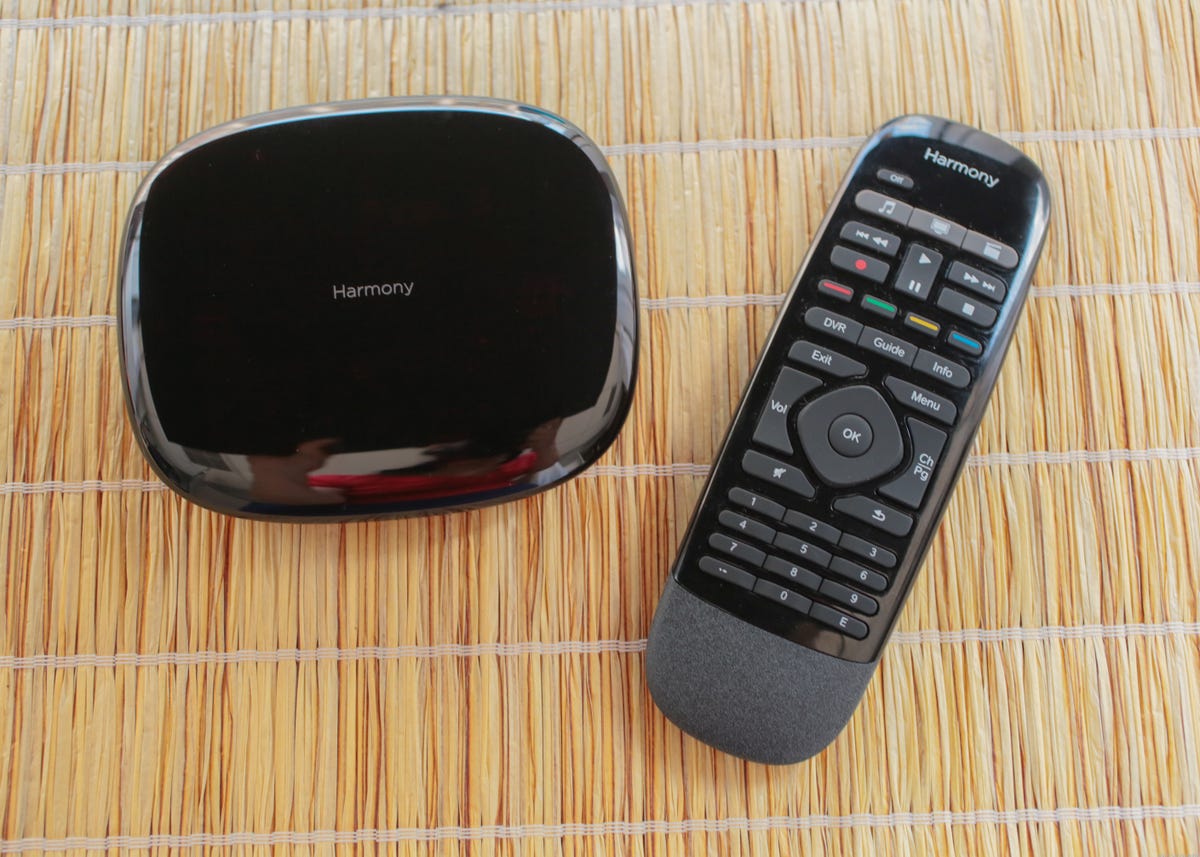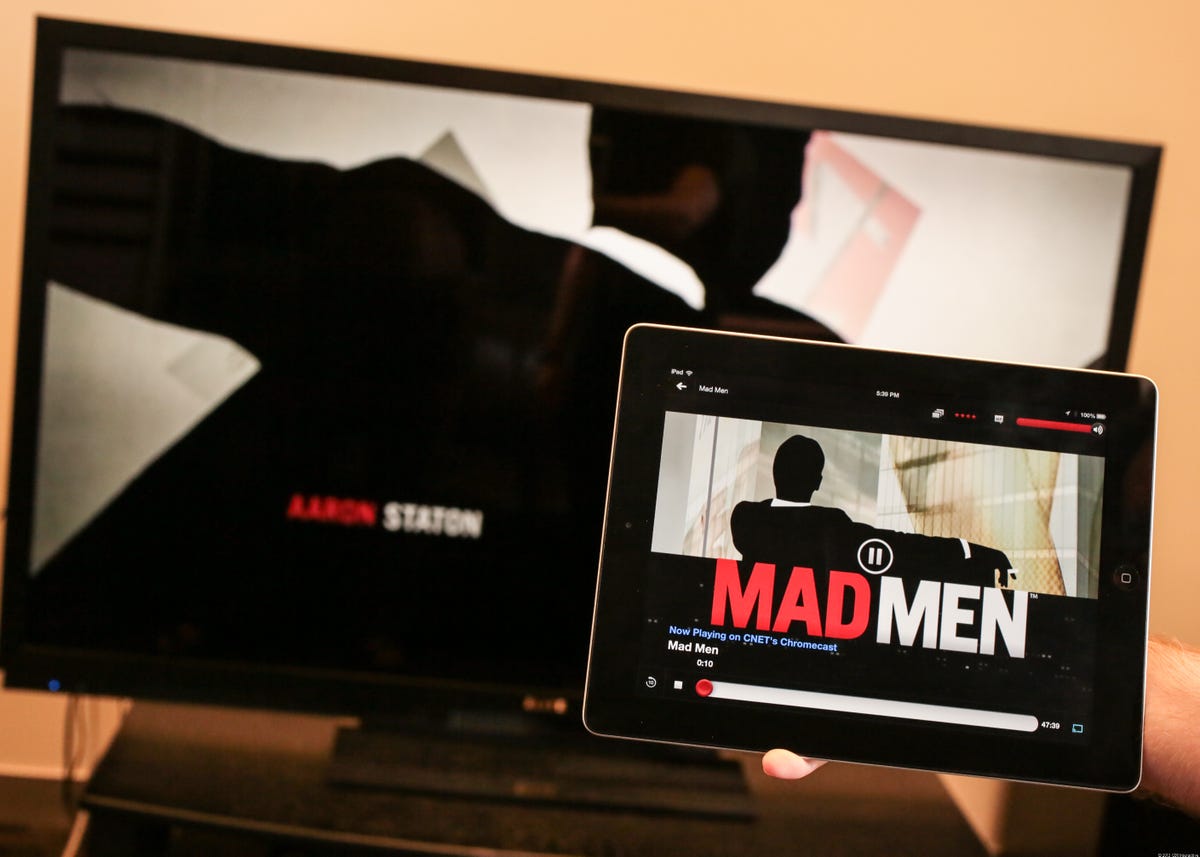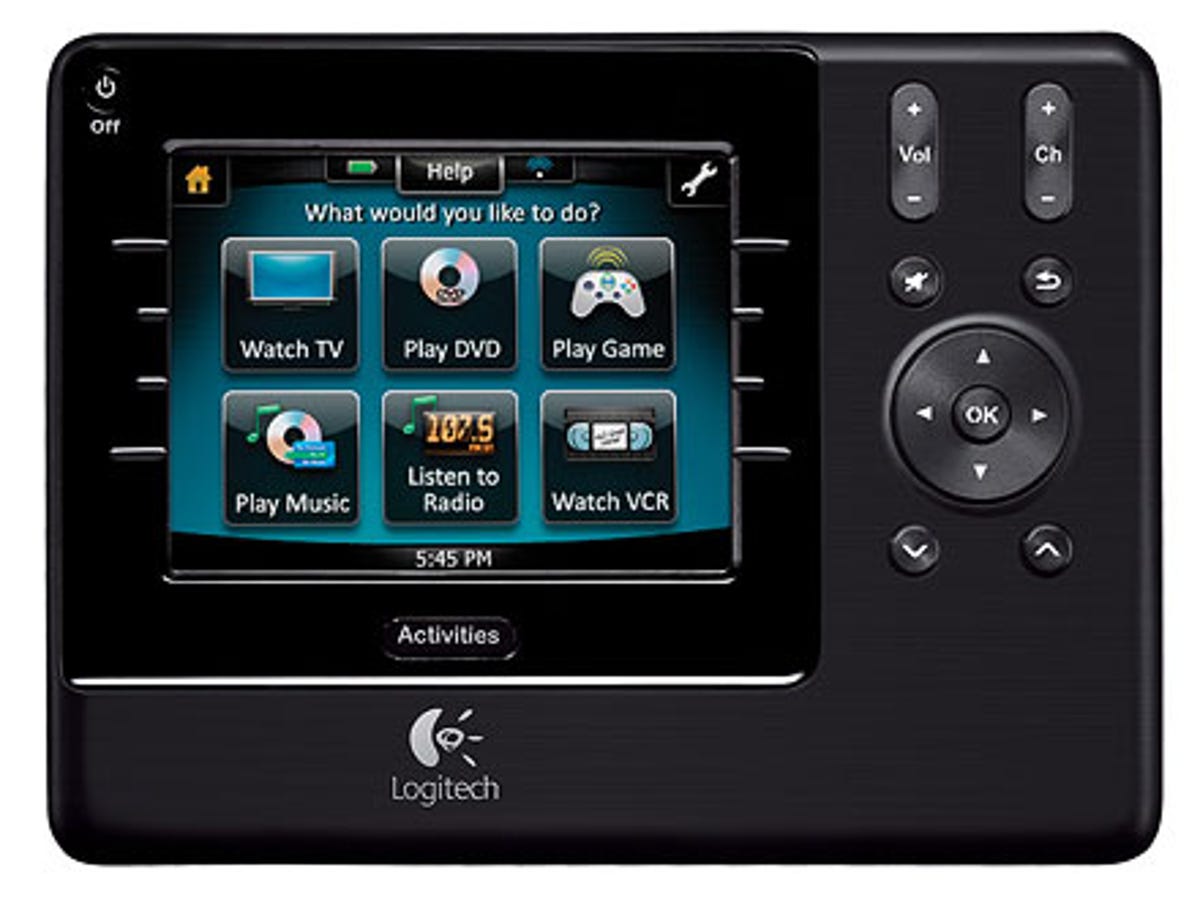Two of the most interesting products this year are built around the same idea: now that so many people own a smartphone or tablet, why not use that screen to control your TV?
It seems like a logical progression, with Logitech’s Harmony Smart Control promising to turn your smartphone into a true universal remote and Google’s Chromecast relying on mobile devices to serve up content to a compact streaming stick.
But what sounds like a good idea doesn’t always work as well in practice.
That’s been my experience with touch screens in the living room, which end up being more of a hassle than a convenience compared with traditional universal remotes.
Why real buttons win
The crucial difference between a physical remote and remote apps is tactile buttons. Tablets and smartphones are defined by their featureless surface that can adapt to seemingly infinite applications: your mobile device can become a gaming system, a home music studio, and yes, even a remote control.


Matthew Moskovciak/CNET
But just because your mobile device can become a remote doesn’t mean it should. Remotes (and video game controllers) are somewhat unusual devices in that they’re specifically designed to be used by feel — your thumb should be able to find buttons without you having to look at the device. In some sense, any time you have to glance at a remote, the device has failed.
Because there are no physical buttons, remote apps always require you to look at them, making them a particularly poor substitute for the traditional remote experience. You’re left shuffling your focus between two screens; you need to look at the remote app to press “up” on a virtual directional pad, then look at your TV to watch the cursor move. It ends up being clunky, slow, and eventually frustrating.
Some remote apps have tried to address this by enabling gesture controls, allowing you to swipe and tap for most functions, which makes it easier to keep you eyes on your TV. It’s not a bad idea, but they tend to be significantly less precise than a real remote. Once you watch the cursor dance around the TV show you want to watch a few times, you’ll quickly be grabbing the old-fashioned clicker.
Physical remotes are faster
When I reviewed the Harmony Smart Control, it didn’t take me long to realize that controlling my home theater using my smartphone wasn’t nearly as useful as it seems. It may not sound like much, but waking up your phone, sliding to unlock, entering a password, swiping to the relevant home screen, then loading the app is a hassle every time you want to simply adjust the volume a little.


Sarah Tew/CNET
Luckily the Harmony Smart Control also includes a traditional remote and I ended up using that almost exclusively. (Including a physical remote was a brilliant decision by Logitech, immediately pushing it past earlier devices like Peel and Beacon.) With a real remote, you just easily pick it up, nudge the volume up a little, and you’re done, all without taking your eyes off your TV. It’s a near-automatic action that doesn’t require you to break your concentration from what you’re watching.
There has been some progress in this regard, as there’s now a whole subset of smartphones (HTC One, Galaxy S4) and tablets (most new Sony, Samsung, and even Hisense Android tablets) that already double as universal remotes, thanks to built-in IR blasters. Some of these devices, such as the Galaxy S4, add the remote functions to the lock screen when it’s on its “home” Wi-Fi network, so you don’t need to unlock the phone to, say, adjust the volume on the TV. That’s a step in the right direction, although it’s not enough to overcome the other obstacles.
Touch-screen remotes intrude on the second-screen experience
Another of the arguments in favor of touch-screen control usually sounds like: I’m already on my mobile device while watching TV, why not use it as a remote? There’s no doubt that quite a few TV watchers multitask with a smartphone or tablet, but relying on a remote app can actually detract from the multitasking experience. Again, the delay in having to switch apps, rather than picking up a device that is always ready-to-go, gets frustrating over time, especially for little tweaks. It ends up being less disruptive to grab a real remote than get right back to tweeting.
Tablets are better remotes than smartphones, and that’s a problem
Google’s Chromecast is able to elude some of the typical pitfalls of controlling your TV using a mobile device. Rather than forcing you to split your attention between two screens, you browse all your content on your tablet or smartphone, before sending the video to your TV. (Unfortunately it only works with Netflix, YouTube, and Google Play Music and TV & Movies at the moment and doesn’t offer total system control like the Harmony Smart Control.)


Sarah Tew/CNET
However, when I reviewed the Chromecast, one thing that stuck out to me is how much better the experience was on a tablet vs. a smartphone. Browsing through Netflix on the generous screen size of an iPad was a joy, but the Netflix interface on a smartphone feels cramped. And that’s not just on my iPhone 4’s relatively small screen; CNET Editor David Katzmaier had the same complaint using his jumbo-screen Galaxy Note 2.
The larger screen makes tablets inherently better suited as remotes (as least as implemented by the Chromecast), which is somewhat of a practical problem. While everyone in a household may have his own smartphone — already a big assumption — that’s less likely for tablets. If someone is already busy on the household tablet, or brought it on the go, whoever wants to watch TV may be out of luck.
And even for households where everyone has his own tablet, you’re less likely to always have it on you. My iPad tends to float around different rooms in my home, so it wasn’t unusual to sit down to watch TV, then realize my iPad wasn’t in the living room. That’s why it’s still good to have a physical remote as a fallback solution, as the Harmony Smart Control recognizes.
What could work: A customized living room tablet
As they exist now, touch screens aren’t a great solution for living room control. But what might be interesting is a modern tablet that’s specialized for the living room.
At the very least, that probably means a physical play/pause button and enabling the volume controls on the tablet to directly control the volume of your TV, AV receiver, or sound bar. (The Chromecast already allows for this in some configurations, but it’s not quite flexible enough for all scenarios.) There’s also a good argument for including dedicated transport controls (fast-forward, rewind, 30-second skip, jump back) for heavy DVR users.


Logitech
A specialized tablet will also be much more effective once Chromecast-style control is enabled on more apps. Chromecast uses the DIAL protocol, which is what allows it to use an app’s native interface on a mobile device, then push commands to your TV. Right now, DIAL is only supported by Netflix and YouTube, but Chromecast’s popularity appears to be spurring other developers to add support.
Even better would be improved support from cable boxes, letting you browse listings and recordings, then watch your TV. Some DVRs already allow for this, like TiVo’s excellent iPad app, but it’s not widespread. (The cable industry’s resistance to providing deep integration with its DVRs is one of the reasons Google TV never worked as good as promised.)
Don’t count out the remote just yet
But even if all that comes to pass, tablets and smartphones might not beat the old reliable remote, at least for me. When I sit down to watch TV or a movie, often I’m looking for a respite from my smartphone’s stream of e-mail notifications, text messages, and the constant temptation to Google whatever pops into my head. A dedicated remote lets you unplug just a little bit more, separating my “connected” moments from when I’d rather get lost in movie or TV show. It might not be the fanciest gadget, but the remote control could last longer than you’d think.




